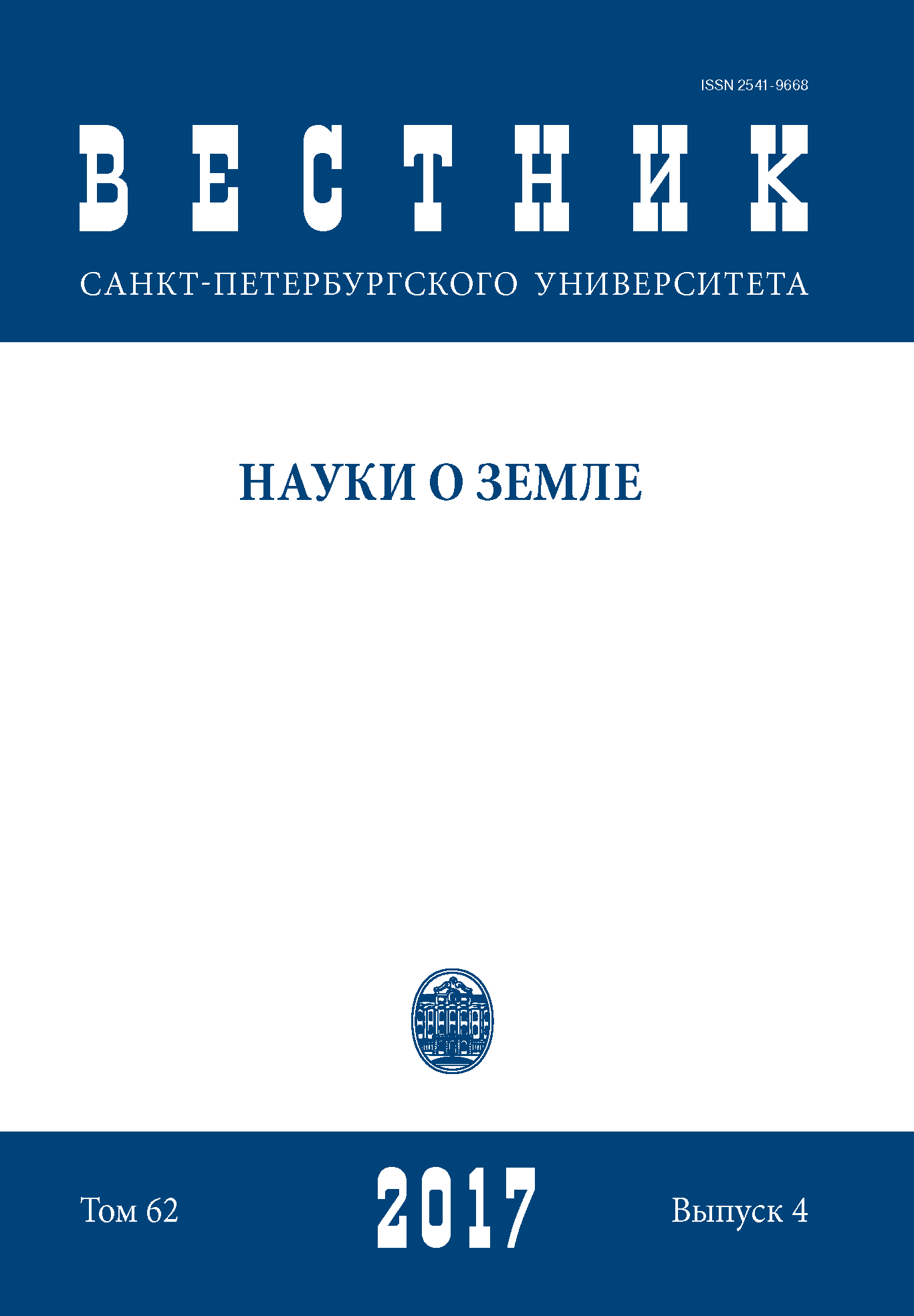Ecogeochemical estimation of environmental pollution by monitoring data of heavy metals contamination in soil and snow cover (at the example of Vasileostrovsky district of Saint Petersburg)
DOI:
https://doi.org/10.21638/11701/spbu07.2017.403Abstract
An ecogeochemical assessment of the state of the environment of the Vasileostrovsky district of St. Petersburg based on the monitoring of the content of heavy metals (Pb, Zn, Cu, Cr, Ni) in snow cover and soil was carried out. It was established that in soils the average concentration coefficient of the elements under study decreases in the series Zn > Cu> Pb> Cr > Ni. Authors considers the method of estimating the spatial heterogeneity of distribution of heavy metals in urban soils within the area of the “envelope” sampling method. It was revealed that, in general, the variation within the standard “envelope” area is equal to 30 %. Authors proposed a “principle of minimizing the possible harmful effects of chemical contamination of soils” based on the measured value variations. For example, the distribution of total index of soil contamination within the Vasileostrovsky district of St. Petersburg shows that the accounting errors of sampling soil using the “envelope” sampling method associated with natural uneven areal distribution of heavy metals, can significantly affect the definition of the category of soil contamination. The difference between soil and soil contamination in the northern, central and western parts of the Vasilievsky island became more clearly visible — the latter turned out to be less contaminated. It was established that zinc determines the total snow cover contamination index, as well as in the case of soil. However, the series of concentration decrease looks different: Zn > Ni > Cu > Cr > Pb. A high positive correlation was found between the coefficients of zinc concentration in the snow cover and soil, which may indicate a constant supply of this pollutant to the components of the environment. A similar pattern was noticed for the total pollution index. The most noticeable difference was noted in the contamination of soil and snow cover by lead. For soils lead concentration determines the total pollution index. In snow lead content is at the background level. This may indicate that at present the intake of lead into the atmosphere is noticeably lower than 10 years ago.
Keywords:
heavy metals, urban soils, snow cover
Downloads
References
References
Downloads
Published
How to Cite
Issue
Section
License
Articles of "Vestnik of Saint Petersburg University. Earth Sciences" are open access distributed under the terms of the License Agreement with Saint Petersburg State University, which permits to the authors unrestricted distribution and self-archiving free of charge.






